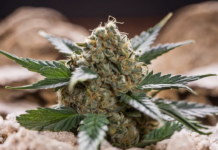Growing plants from seeds can be a rewarding and fulfilling experience. Whether you’re a seasoned gardener or a beginner looking to try your hand at gardening, starting plants from seeds allows you to witness the entire growth process firsthand. In this comprehensive guide, we will explore the steps and techniques to successfully grow five popular seeds: tomatoes, basil, sunflowers, cucumbers, and lettuce. Follow these tips and tricks to ensure your seeds germinate, grow strong, and flourish into thriving plants.
Getting Started: Seed Selection and Preparation
Before you begin your planting journey, it’s essential to select high-quality seeds from a reputable source. Look for heirloom or non-GMO seeds for the best results. Ensure the seeds are not expired and store them in a cool, dry place until you’re ready to plant.
Tips:
– Choose seeds suited to your climate and growing conditions.
– Read seed packets for specific planting instructions.
– Consider starting seeds indoors for a head start on the growing season.
Seed Germination: Providing the Right Conditions
Proper germination is crucial for the success of your plants. Each type of seed has specific requirements for germination. Generally, seeds need moisture, warmth, and oxygen to sprout.
Tips:
– Use a well-draining seed starting mix to avoid waterlogged conditions.
– Maintain consistent moisture levels by misting the soil regularly.
– Provide warmth by placing seeds in a sunny location or using a heat mat.
Seedling Care: Nurturing Young Plants
Once your seeds have germinated and seedlings have emerged, it’s time to provide them with the care they need to thrive. Proper watering, lighting, and nutrition are essential during this stage.
Tips:
– Water seedlings from the bottom to encourage strong root growth.
– Provide adequate light to prevent leggy growth. Consider using grow lights if natural light is limited.
– Fertilize seedlings with a diluted, balanced fertilizer once they have developed their first set of true leaves.
Transplanting Seedlings: Moving to Larger Containers
As your seedlings grow, they will eventually outgrow their starter pots and require transplanting into larger containers or the garden. Transplanting should be done carefully to minimize root disturbance.
Tips:
– Transplant seedlings into containers with adequate drainage holes to prevent waterlogging.
– Handle seedlings by their leaves to avoid damaging delicate stems.
– Harden off seedlings before transplanting them outdoors by gradually exposing them to outdoor conditions.
Outdoor Planting: Establishing in the Garden
When the threat of frost has passed, and your seedlings are robust and well-established, it’s time to transplant them into the garden. Proper planting techniques will ensure the continued growth and success of your plants.
Tips:
– Choose a sunny location with well-draining soil for optimal plant growth.
– Space plants according to their specific requirements to prevent overcrowding.
– Mulch around plants to retain moisture and suppress weeds.
Common Pests and Problems: Identifying and Treating Issues
Despite your best efforts, plants may still face challenges such as pests, diseases, or environmental stressors. Regular monitoring and early intervention are key to preventing and managing problems effectively.
Tips:
– Inspect plants regularly for signs of pest damage, disease, or nutrient deficiencies.
– Use organic pest control methods such as neem oil or insecticidal soap when needed.
– Practice good garden hygiene to reduce the risk of disease spread.
Frequently Asked Questions (FAQs)
Q1: Can I use seeds from store-bought fruits and vegetables to grow plants?
A1: Yes, you can use seeds from store-bought produce, but keep in mind that hybrid varieties may not produce true to type.
Q2: How deep should I plant seeds?
A2: The general rule of thumb is to plant seeds at a depth that is approximately two to three times their diameter.
Q3: How long does it take for seeds to germinate?
A3: Germination times vary depending on the type of seed, but most seeds will sprout within 1-2 weeks under ideal conditions.
Q4: When should I start seeds indoors?
A4: Start seeds indoors 6-8 weeks before your last expected frost date to give seedlings enough time to grow before transplanting outdoors.
Q5: How often should I water seedlings?
A5: Water seedlings when the top inch of soil feels dry to the touch, ensuring they are moist but not waterlogged.
Embark on your seed-growing journey with confidence using the tips and techniques outlined in this guide. By providing the right conditions, care, and attention to your seeds, you’ll soon be enjoying a bountiful harvest of tomatoes, basil, sunflowers, cucumbers, and lettuce. Happy planting!










